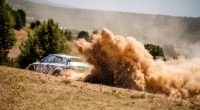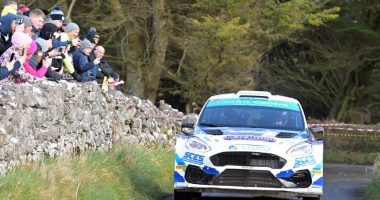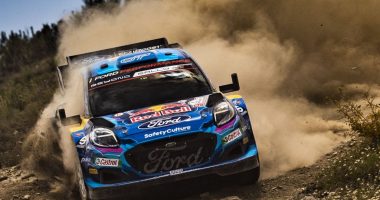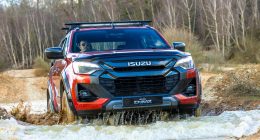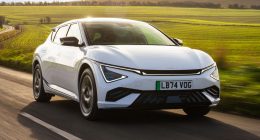The countdown to the 2022 Dakar Rally is underway – and Audi now has just three months to have its new RS Q E-tron ready for the rough and tumble of the Saudia Arabian wilderness.
The man overseeing Audi Sport’s return to one of the planet’s most daunting test of man and machine says a two-week test in Morocco helped the team to much better understand its evolving test mule.
Carlos Sainz, Stephane Peterhansel and Mattias Ekstrom all had the chance to drive the RS Q E-tron over a two-week period in conditions that closely resembled what they can expect at January’s Dakar.
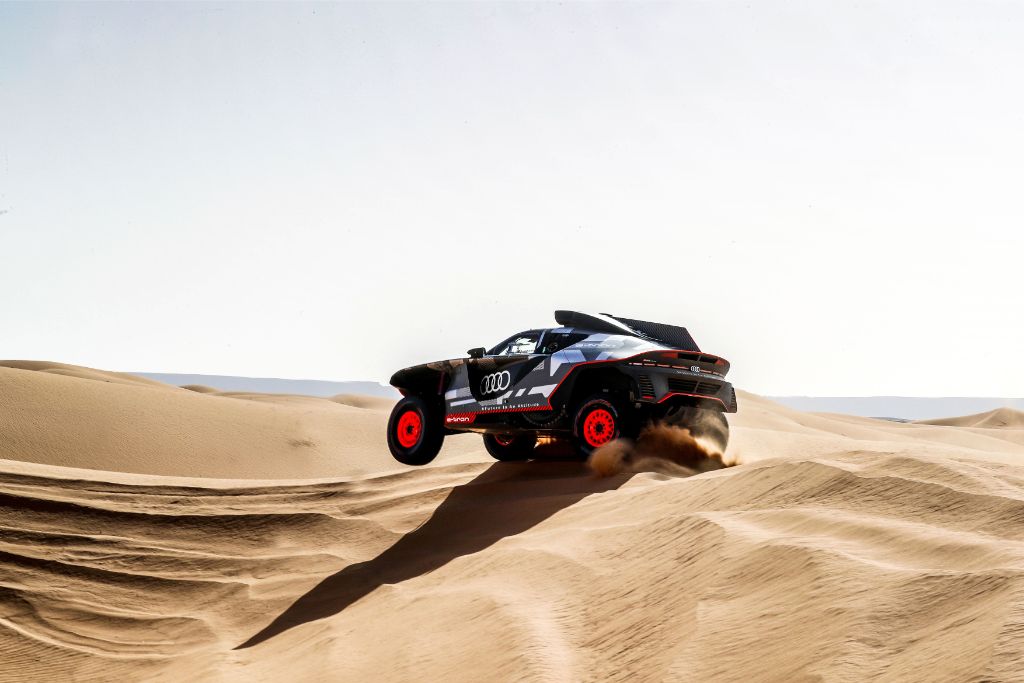
It was the first time the car has run for extended periods, and followed a test in the Monegros desert in north-eastern Spain where the drivetrain, motors and chassis were subjected to 124-miles of rigour.
Incorporating technology developed through Audi’s DTM and Formula E participation, the RS Q E-tron is powered by an electric powertrain comprising a 52kWh battery pack and two motor-generator units (MGUs) on top of a 2.0-litre, four-cylinder turbocharged petrol engine served by a 295-litre fuel tank.
“The Dakar is extremely challenging – even for a conventionally powered vehicle,” explained Project Leader, Andreas Roos, “and with our unique powertrain concept, the challenge is distinctly greater.
“In our Audi RS Q E-tron, we have an electric motor at the front axle, an electric motor at the rear axle, the high-voltage battery and the energy converter that consists of another MGU and the TFSI engine.
“Each of these components requires a dedicated cooling system. That means the car has not only one cooling system but up to six, including the intercooler and air con system for the driver and co-driver.”
Adding to the challenge is the nature of the Dakar Rally where sand, water, extreme heat and elevation changes are common occurrences. “We have a really large amount of sensitive electronics,” said Roos.
“And we have many electrical components in the car that we need to protect against sand and water as effectively as possible.
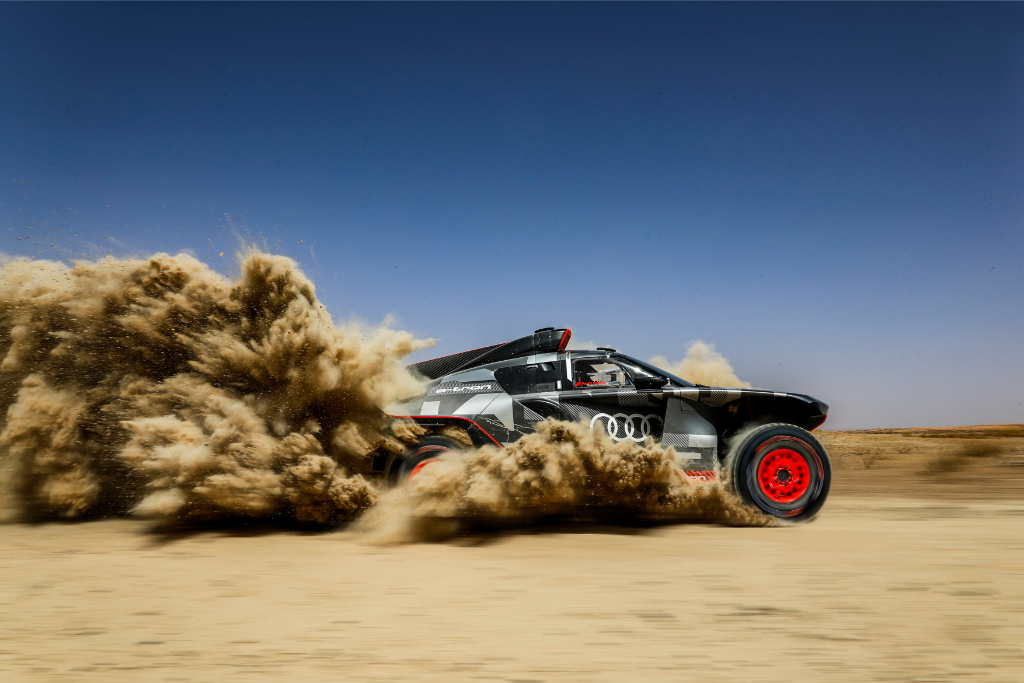
“We’ve learned a lot in the tests we’ve run so far and are now trying to feed all of our findings into the rally cars in time for the Dakar Rally,” which starts on Thursday, January 2.
“We’ve got two central control units and around four kilometres of cables in the vehicle – not even counting the high-voltage cables,” adds Roos.
“The interaction of all powertrain components and the high-voltage battery as well is extremely complicated; if anything doesn’t fit there, the car will stop.”
These components are packaged within a vehicle that is 4,500mm long, 2,300mm wide and 1,950mm tall with the gull wing doors, roof integrated air scoop and shark fin spoiler at the back some of the key design talking points.
To maximise the car’s aerodynamic properties, the two spare wheels are concealed inside the bodywork, one either side of the car behind both the driver and passenger doors.

